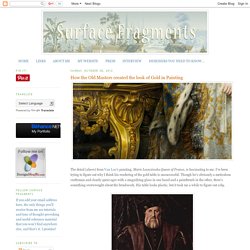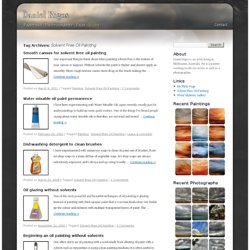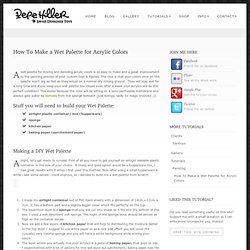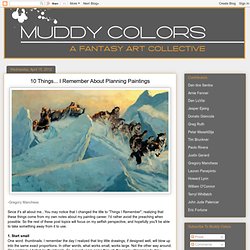

Portrait Painting Demo with Rob Liberace, part 1 — The Art League School. Color Study Demo, part 1 — The Art League School. Surface fragments: How the Old Masters created the look of Gold in Painting. The detail (above) from Van Loo's painting, Marie Leszczinska Queen of France, is fascinating to me.

I've been trying to figure out why I think his rendering of the gold table is unsuccessful. Though he's obviously a meticulous craftsman and clearly spent ages with a magnifying glass in one hand and a paintbrush in the other, there's something overwrought about the brushwork. His table looks plastic, but it took me a while to figure out why. Holbein was, of course, a master at painting the detailed effects of light and shade on any number of textures. I examined his Portrait of Charles de Solier (above) for clues as to his technique for painting gold. Local color and value are notoriously hard to read, so I took color samples from the sword handle, (a) through (e) above, and then de-saturated them to get their values.
The values are all gathered tightly around the bottom of the spectrum, between Value 1 and 3. Daniel Rigos : Solvent Free Oil Painting. Smooth canvas for solvent free oil painting One important thing to think about when painting solvent free is the texture of your canvas or support.

Without solvents the paint is thicker and doesn’t apply as smoothly. More rough texture causes more drag on the brush making the … Continue reading Water mixable oil paint permanence. How To Make a Wet Palette for Acrylic Colors @ Pepe Hiller – Swiss Made Wood, Resin and Vinyl Toys. Wet palette for mixing and blending acrylic colors is so easy to make and a great improvement to the painting process of your custom toys & figures.

The clue is that your colors once on the palette won‘t dry as fast as they would on a normal dry mixing ground. They will stay wet for a long time and if you keep your wet palette box closed even after a week your acrylics will be still perfect condition! This works because the color will be sitting on a semi-permeable membrane and always gets water by osmosis from the sponge beneath (just biology, sadly no magic involved ;)) airtight plastic container/ box (tupperware)spongekitchen paperbaking paper (parchement paper) lright, let‘s get ready to rumble! I made my airtight container out of PVC foam sheets with a dimension of 14cm x 12cm x 3cm. The Basic Elements - Shape Value Color Edge.
Painting-Tutorials-Online.com. Acquisition Time Lapse. Painting Fundamentals. Waddellwebisodes. 10 Things... I Remember About Planning Paintings. -Gregory Manchess Since it's all about me...You may notice that I changed the title to 'Things I Remember", realizing that these things come from my own notes about my painting career.

I'd rather avoid the preaching when possible. So the rest of these post topics will focus on my selfish perspective, and hopefully you'll be able to take something away from it to use. 1. Start small One word: thumbnails. 2. 3. Which leads to... 4. 5. 6. 7. 8. 10 Things...About Planning Pictures. Gregory Manchess Start small.

Thumbnails. Learn to draw them. 10 Things I Remember...About Tracing. Oil Painting Tutorial, underpainting. Michael_Georges: Underpainting - A primer for the new painter (1 of 3) Many new painters have questions about underpainting. The thing to know about underpainting is that there are many ways to do it and each way will affect the resulting painting in different ways. Thus, you can study different types of underpainting to achieve differing effects. Underpainting is not absolutely necessary to oil painting and there are many artists who are accomplished enough to create alla prima with no underpainting.
Many artists, including myself, have done underpainting in monochrome values similar to a black and white photo. The monochrome painting method has been used throughout the ages as not only an underpaininting method, but also a teaching tool. Others paint more directly - that is, they underpaint in the same colors they will use in the final painting. The Uses of Underpaintings (as explained by Ilaekae and Jason Manley) Originally Posted by hylandr2 I'm really not sure I understand what the concept of the underpainting is for.

I was reading a "Painting like the old Masters" book in Barnes and Noble and I see for example, if the artist is doing a nude painting, he/she would underpaint the flesh tone areas grey with all of the values being applied in values of grey. I have seen portraits that are more reddish when completed started with a green underpainting and the painting of a pheasant that I was doing in class was recommended to be underpainted in purple because the bird was burgandy with golden yellow areas as the dominant colors. I don't understand why. Can someone explain it, or at least answer these questions? Imprimature and Underpainting. Imprimature and underpainting are classical painting techniques, used in contemporary painting as wel.

Most oil painting techniques are done in layers that are left to dry, before working on them again - a practical need before the invention of Liquin. But layering is also about creating depth and quality. I've heard very good painters define their art as: "knowing what layers to put over each other". Contemporary painters find their own recipes, and traditional underpainting techniques are like the recipes of your grandmother: tested and refined by generations of painters since the middle ages.
During the ages these techniques gained a meaning of their own. Adrian van Ostade (1658) They're great, the old Dutch guys. Classical terms.